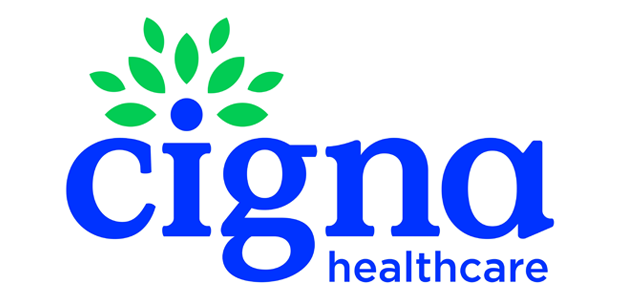Provider credentialing is an essential process for healthcare professionals looking to join insurance networks. We discuss the credentialing process with Cigna, one of the leading health insurance providers in the United States. Understanding and successfully navigating this process is crucial for healthcare providers seeking to expand their practice and serve Cigna’s member population.
Overview of Cigna Credentialing
 Cigna’s credentialing process is designed to verify the qualifications, background, and professional competency of healthcare providers. This thorough vetting ensures that Cigna members have access to qualified healthcare professionals who meet high standards of patient care.
Cigna’s credentialing process is designed to verify the qualifications, background, and professional competency of healthcare providers. This thorough vetting ensures that Cigna members have access to qualified healthcare professionals who meet high standards of patient care.
Purpose of Credentialing
- Ensure patient safety and quality care delivery
- Verify provider qualifications and competency
- Meet regulatory requirements and accreditation standards
- Maintain the integrity of Cigna’s provider network
The Cigna Credentialing Process
Initial Application Steps
CAQH ProView Registration
- Cigna primarily uses CAQH ProView or CAQH Provider Data Portal for credentialing
- Providers must maintain an up-to-date CAQH profile
- Regular attestation is required (typically quarterly)
Required Documentation
- Current state medical license(s)
- DEA certification (if applicable)
- Professional liability insurance
- Board certifications
- Curriculum vitae
- Educational background verification
- Clinical privileges at participating hospitals
- Work history (minimum of five years)
- Professional references
Application Timeline
The typical credentialing process with Cigna takes 60-90 days, though this can vary based on several factors:
- Completeness and accuracy of the application
- Verification of primary sources
- Response time from references and previous employers
- Current credentialing volume at Cigna
Cigna-Specific Requirements
Participation Options
Cigna offers different network participation options:
Commercial Networks
- Traditional PPO networks
- LocalPlus® networks
- Behavioral health networks
Medicare Advantage Networks
Collaborative Care Programs
Each option may have specific additional requirements or considerations.
Quality Standards
Cigna emphasizes quality care delivery through:
Quality Metrics Monitoring
- Patient outcomes tracking
- Adherence to clinical guidelines
- Patient satisfaction scores
Cost Efficiency Standards
- Appropriate resource utilization
- Adherence to evidence-based practices
Best Practices for Cigna Credentialing
Preparation is Key
Before initiating the credentialing process:
- Ensure all licenses and certifications are current
- Update your CAQH ProView profile completely
- Gather all required documentation
- Verify malpractice insurance meets Cigna’s requirements
Accuracy in Documentation
Maintain precise records:
- Double-check all dates and information
- Explain any gaps in work history
- Provide detailed explanations for any disciplinary actions or malpractice claims
Follow-Up Protocol
Stay engaged in the process:
- Keep a log of all submissions and communications
- Follow up every 2-3 weeks on application status
- Respond promptly to any requests for additional information
Common Challenges and Solutions
Challenge 1: Incomplete CAQH Profile
Solution:
- Set regular reminders to update CAQH information
- Use CAQH’s completeness meter to ensure all sections are filled
- Save a copy of your CAQH profile for reference
Challenge 2: Verification Delays
Solution:
- Inform previous employers and references about potential verification requests
- Provide multiple contact methods for each reference
- Consider using a credentialing service to expedite the process
Challenge 3: Network Adequacy
Solution:
- Research Cigna’s network needs in your area
- Highlight unique services or specialties you offer
- Consider multiple practice locations if appropriate
Recredentialing Requirements
Cigna requires recredentialing every three years.
Key aspects include:
Recredentialing Timeline
- Typically begins 6 months before the three-year mark
- Providers are notified via mail or email
Updated Information
- Current licenses and certifications
- Any changes in practice location or services
- Updated malpractice history
- Continuing education documentation
Performance Review
- Quality metrics evaluation
- Patient satisfaction scores
- Adherence to Cigna policies
- Claims history review
Technology and Cigna Credentialing
Digital Tools
Cigna utilizes various technological solutions:
Provider Portal
- Application status tracking
- Document submission
- Updates and notifications
Electronic Verification Systems
- Automated license verification
- Real-time updates for certain credentials
Tips for Using Cigna’s Digital Platforms
- Bookmark important portal pages
- Keep login credentials secure but accessible
- Familiarize yourself with the portal’s features
- Use electronic document submission when possible
Financial Considerations
Credentialing Costs
- Application fees (if applicable)
- Time investment in documentation
- Potential need for credentialing assistance
Post-Credentialing Financial Impact
- Understanding Cigna’s fee schedules
- Billing procedures and requirements
- Claims submission processes
Compliance and Legal Aspects
Regulatory Compliance
Providers must adhere to:
- State-specific requirements
- Federal regulations
- Cigna’s compliance programs
Documentation Requirements
- Maintain accurate and complete records
- Regular updates of practice information
- Adherence to Cigna’s policies and procedures
Specialty-Specific Considerations
Primary Care Physicians
- Patient panel requirements
- Quality metric expectations
- After-hours coverage documentation
Specialists
- Referral processes
- Subspecialty certification requirements
- Procedure volume documentation
Behavioral Health Providers
- Specific licensure requirements
- Session length and frequency guidelines
- Telehealth credentials if applicable
Maintaining Your Cigna Relationship
Ongoing Compliance
- Regular review of Cigna’s provider manuals
- Participation in required training
- Adherence to utilization management guidelines
Quality Performance
- Monitoring of quality metrics
- Participation in quality improvement initiatives
- Regular review of patient satisfaction data
Communication
- Keeping contact information current
- Prompt reporting of any practice changes
- Regular interaction with provider representatives
Summary: A Guide to Provider Credentialing with Cigna
Successfully navigating the Cigna credentialing process requires thorough preparation, attention to detail, and ongoing commitment to maintaining high standards of care. By understanding the requirements, following best practices, and staying proactive in the process, healthcare providers can effectively join and remain in Cigna’s network.
Remember that credentialing is not just a administrative hurdle but an opportunity to demonstrate your commitment to quality healthcare delivery. Staying informed about Cigna’s requirements and maintaining compliance will ensure a successful long-term relationship with the insurer.
For providers considering joining Cigna’s network, this post serves as a roadmap to understanding and successfully navigating the credentialing process. By following these guidelines and maintaining high professional standards, providers can position themselves for a successful partnership with Cigna, ultimately benefiting both their practice and their patients.
*If you decide to work with Medwave, please see our comprehensive CAQH ProView Form (we do the work for you, once you’ve filled out the form).

